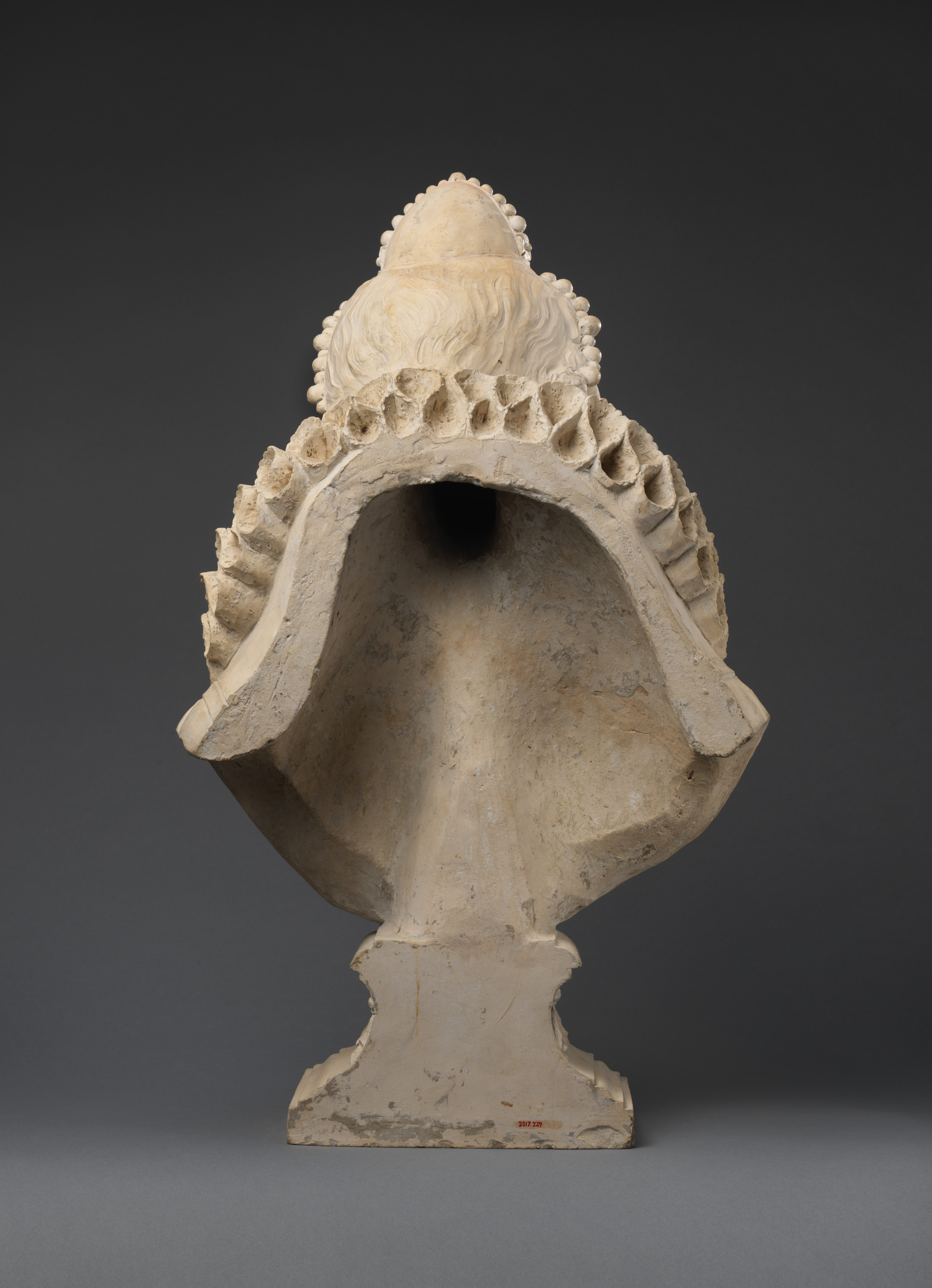Queen Elizabeth I (1533–1603)
Model attributed to John Bacon the Elder British
Manufactory Coade Manufacture, Lambeth, London
Factory director Eleanor Coade British
Elizabeth I casts her dignified gaze slightly downward and right of center. The movement of her head tempers the otherwise rigid frontal symmetry of the Queen’s pose and stately attire. The rich ornamentation of her costume contributes to her dual status as beloved monarch and cultural relic, or jewel, of British history. Created almost two hundred years after her death, this fine under life-size Coade stone bust, fit for the domestic interior of a prosperous patron, exemplifies the enduring prevalence of the cult of Elizabeth I throughout the eighteenth century.
Elizabeth I conveys the overlapping histories of two remarkable British women: the great Tudor Queen, Elizabeth I of England (1533–1603), and the pioneering businesswoman, Eleanor Coade (1733–1821). In 1769, Mrs. Coade, as she liked to be called despite never marrying, began producing artificial stone in her Lambeth factory from a then-secret formula called Coade stone (or Lithodipyra - containing a mix of clay, terracotta, silicates, and glass). In 1771, she hired John Bacon, whose neoclassical designs and brilliant workmanship helped establish Coade’s Artificial Stone Company as the leading artificial stoneware producer in England. Durable and weatherproof, Coade stone served many functions, but was an especially attractive option for architects like Robert Adam, who were searching for a means of applying increasingly delicate ornament to their buildings.
The intimate scale and superbly preserved detail of Elizabeth I’s complex modeling indicate that the bust was likely displayed indoors. As such, Elizabeth I represents the range and ambitions of the Coade stone factory.
Due to rights restrictions, this image cannot be enlarged, viewed at full screen, or downloaded.
This artwork is meant to be viewed from right to left. Scroll left to view more.




